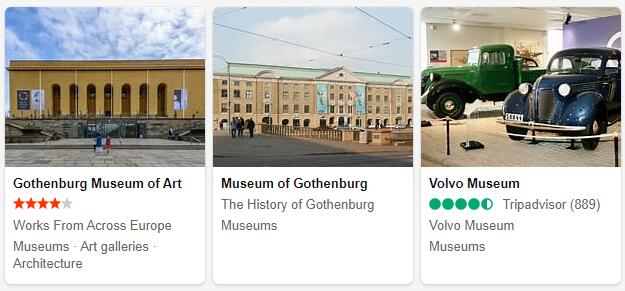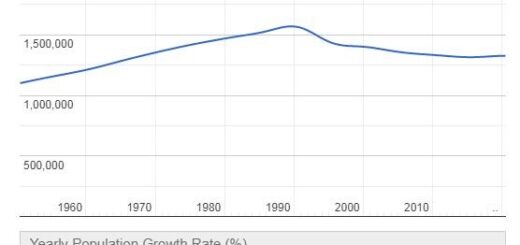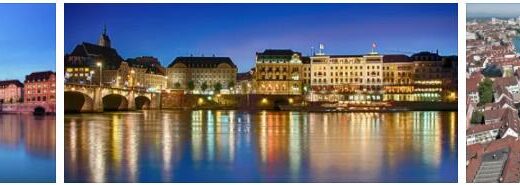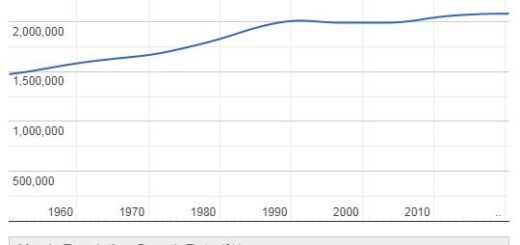Gothenburg Attractions and Tourist
Gothenburg Attractions
If you plan to visit several of Gothenburg’s attractions over a weekend, you should definitely invest in a Gothenburg Pass. The Gothenburg Pass or Gothenburg City Card as it is now called gives you free access to many of the attractions and free public transport and parking. In addition, you get discounts in selected shops and restaurants. A one-day pass costs about SEK 300 for adults and about 200 for children, while a 48-hour pass is relatively cheaper. You can buy it at the tourist offices and at many hotels, or on the homepage of the city of Gothenburg.
Do you want an overview map of Gothenburg with all the attractions? Click here for Map Gothenburg!
Liseberg
Liseberg is both Gothenburg and Sweden’s largest tourist attraction, with over 3.4 million visitors annually. Liseberg is the largest amusement park in the Nordic region and is located in the city center, a few minutes walk from Avenyn. Liseberg has been here since 1923. The main attraction in recent years has been Balder, a roughly one kilometer long roller coaster of wood where you are thrown around at 90km / h. Liseberg also has dining places, carousels, radio cars, ghost houses and arcades enough to keep both children and parents active and smiling all day.
Liseberg is open from April to October and is also open in December. Admission costs NOK 60, but there are no tickets for the attractions. The price of these varies. Free entrance (entrance) with Gothenburg Pass.
Universeum
This is a science center for the whole family, which covers everything from sharks and rainforests to technique and exciting experiments. Open 1000 to 1800 every day except Mondays in the period September-May. Universeum is located in Södra Vägen 50 just off Liseberg, and you can get combination tickets to both attractions. A single ticket costs 135 Swedish kronor for adults and 95 for children, but in the peak season July-August it costs 145 for everyone. Free admission with Gothenburg Pass.
Gothenburg City Museum
City Museum is located in the former premises of the Swedish East India Company, and only that is a good enough reason to visit this exhibition, which focuses on the culture and history of the region from prehistoric times up to today. The main attraction is Sweden’s only Viking ship at a public exhibition, the Äskeskärskipet. Here is also a separate Children’s Museum. The City Museum is located in Norra Hamngatan 12 and is open daily from 10 am to 5 pm during the period May to August. Admission costs 40 kroner for adults, children free admission. Free admission with Gothenburg Pass.
Gothenburg Botanical Garden The
Gothenburg Botanical Garden is considered one of Europe’s best, and covers an area of 175 hectares and offers around 16,000 plant species. The garden was built in conjunction with the city’s 300th anniversary in 1923, and has received very good reviews in the latest Michelin Guide. Open from 9am to sunset every day throughout the year. Admission is free, but a voluntary donation of NOK 10 per visitor is warmly welcomed.
New Älvsborg Fortress
This fortress at Gothenburg’s harbor entrance was built in the 1600s to defend the city against the Danes before it was later used as a prison. In recent years, the fortress has been a popular excursion destination for Gothenburg residents. Guided tours are available from May to September. To get here, take a boat from Lilla Bommen, just off Nordstan. These run approximately every half hour and the crossing takes just as long. Price 100 SEK, but then an informative tour is included. Free with Gothenburg Pass.
Feskekörka
In the district Within the moat is Gothenburg’s market hall for fish and shellfish, from 1874. Due to the building’s similarity to a church, it is called the Fish Church. The architect must have drawn inspiration from both national romance, Norwegian stave churches and Gothic stone churches. Feskekörka is located by the Rosenlund Canal.
Slottsskogen
Gothenburg’s largest park is located in southwestern Gothenburg, and the name Slottsskogen can seem a bit misleading, since there is no castle and little forest. What you will find is Sweden’s oldest zoo, including harnesses, penguins and a birdhouse. In the northeast corner of the park is the Natural History Museum, which was founded as early as 1833, and is close to a public observatory. There is also a beach volleyball court, a mini golf course and a frisbee golf course. To the south there is a view tower where you can get a fantastic view of Gothenburg. Slottskogen is an open park with free 24-hour access.
The
Gothenburg Art Museum’s art museum is located on Götaplatsen, at the bottom of Avenyn. Here you will find a large collection of mainly Nordic artists, such as Carl Larsson, Harriet Backer, Ernst Josephson and Edvard Munch from Norway. But there are also works of world names such as Picasso, Chagall and Rembrandt. Open from 1100 every day, but closed Mondays. Entry 40 kroner, child free admission. Free admission with Gothenburg Pass.
Trädgårdsföreningen
This park was built in 1842 and is located right in the center, between Avenyn and Drottningtorget. Here you will find a Rosarium, a butterfly house and large greenery. Also, don’t miss the center of Palm House, with its collection of tropical trees and plants. The building was built in 1878 entirely of iron and glass according to the model of London’s Crystal Palace. The Trädgårdsföreningen is open from 0700 to 2000 in the period April to September (from 0900 on weekends) In the winter season it closes 1800. Entry 15 NOK, children free admission. Free admission with Gothenburg Pass.
Gothenburg Tourist
Gothenburg city center is so small and compact that it is no problem for a fairly pedestrian to get along most of it on foot. But if you wish, you can of course get guided tours, either in an open bus or on a canal boat. Both options are run by the company Paddan.
Day 1 in Gothenburg
We start the day north in Gothenburg, at the Central Station. Just west of you you should now see one of Sweden’s largest department stores, Nordstan. This is in practice eight blocks tied together with a glass roof, which is open until 1900 every weekday and at least at 1700 on weekends. Here is also one of Gothenburg’s tourist offices, which can equip you with city maps and brochures for the places you want to visit. On the west side of Nordstan, take Östra Hamngatan south. If you take a walk into the side street Postgatan (west), you will come to Kronhuset, Gothenburg’s oldest building with ancestry from about 1650. Here the Swedish parliament sat until 1660. In the small stalls in the quarter around Kronhuset from the 18th century find you are a chocolate factory, jeweler, florist, glassware, general store and a cafe.
Afterwards you turn south down Tyggårdsgatan or Smedjegatan, and by the canal you will find Gothenburg City Museum in the former premises of Sweden’s OstindiaKompani. The exhibition deals with culture and history in the region from prehistoric times to the present day. The main attraction is Sweden’s only Viking ship at a public exhibition, the Äskeskärskipet.
Continue east along the Great Harbor Canal and you will pass the German Church of 1648, or Christinae Church as it is actually called. Next to the church is the Town Hall, with a facade facing Gustav Adolfs Torg. This is Gothenburg’s political center, where the city’s founder stands on the shelf, surrounded by the stock exchange and Stadshuset.
On the other side of the canal is Brunnsparken, a popular meeting place in Gothenburg thanks to its central location. Moreover, it is surrounded by tram stops. Almost all the city’s tram lines pass here. In Brunnsparken stands Johanna, a statue of an unknown woman in a beautiful fountain. From Brunnsparken you can go south into the “Inom Vallgraven” district. Either via the busy Östra Hamngatan, with shops, bars and eateries on both sides, or in the parallel street Fredsgatan. This is a clean pedestrian street, completely dedicated to shopping. Visit, for example, the large department store NK, or one of many smaller shops in the side street Kungsgatan. This too is a pedestrian street, and it leads you past Gothenburg Cathedral, from 1815.
At the end of Östra Hamngatan is the Kungsportplatsen, where you will reach another canal, Vallgraven. When you cross the bridge, the parade street continues the royal sports avenue straight ahead. You now have the Great Theater and Kungsparken on your right and the beautiful park Trädgårdsföreningen on the left. Take a tour of the Trädgårdsföreningen and visit the Palmhuset center, with its collection of tropical trees and plants. The building was erected in 1878 entirely of iron and glass according to the model of London’s Crystal Palace. There is also a Rosarium and a butterfly house in addition to large greenery.
If you have not yet eaten lunch, one of Gothenburg’s Michelin star restaurants is located at the end of Avenyn. The fund’s lunch menu is good value for money, considering the quality. If you want to be a little cultural after dinner, it is good that you are now at the Götaplatsen, surrounded by the Stadsteatern, the Concert Hall, the City Library and the Art Museum with the Hasselblad Center. At the museum you can see works by, among others, Carl Larsson, Picasso, Edvard Munch and van Gogh.
After shopping and cultural impressions, it is well time to move back to the hotel and get rid of the shopping bags and relax for a while before thinking about tonight’s dinner. One of the country’s best seafood restaurants is Sjömagasinet, located at the City Museum in Nordstan. Also, this restaurant has a star in the Michelin Guide, and a matching price level. A little more popular and less expensive is the Swedish Swan at Vasaplatsen. The Smaka restaurant is very popular with the city’s students, also because of its associated bar, where it tends to be lively on Friday and Saturday nights. Alternatively, head towards Avenyn afterwards, where the nightlife options are plentiful, from Irish and Australian pubs to rock clubs and exclusive nightclubs.
Day 2 in Gothenburg
After breakfast you can stroll up to Kungsportplatsen and take a sightseeing tour on Gothenburg’s canals. Padan’s sightseeing boats are not far from the tourist information, which is located to the south of Östra Hamngatan. Up to four departures per hour from 1000, the trip takes around 50 minutes and costs 120 SEK for adults. Calculate about half price for children.
If you fancy strolling around in the footsteps of our old friends Albert & Herbert, take the tram or walk to the Haga district, which is about a ten minute walk west of Avenyn. Haga was constructed by order of Queen Kristina, and was the first district in Gothenburg outside the old city walls in the 1600s. Here you will find old, colorful, windswept houses, narrow cobblestone streets and nice little secondhand shops that are no different that Tomas von Brömssen and Sten Åke Cederhök entertained us from. Head over to Cafe Husaren, in Haga Nygata 28, and try out one of their big legendary cinnamon buns.
Or maybe you want to refresh yourself at one of the city’s oldest beer houses, Gillestugan on Järntorget? Whether you are in Gothenburg alone, with a partner or with the whole family, spending the rest of the afternoon and evening at Liseberg is no problem. It’s up to you whether you want to pay 60 kroner just to stroll around and look, or if you want to buy a day pass and use all the roundabouts and roller coasters as much as you want. There are often concerts with well-known artists, and plenty of eateries, from inexpensive sausages and burgers to delicious three courses at the Wärdshuset.
Afterwards it is not far to walk back to the center, and if you fancy, stop at one of the many pubs or cafes you pass on and around Avenyn.




